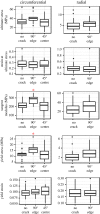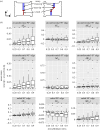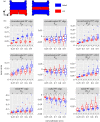Short cracks in knee meniscus tissue cause strain concentrations, but do not reduce ultimate stress, in single-cycle uniaxial tension
- PMID: 30564409
- PMCID: PMC6281910
- DOI: 10.1098/rsos.181166
Short cracks in knee meniscus tissue cause strain concentrations, but do not reduce ultimate stress, in single-cycle uniaxial tension
Abstract
Tears are central to knee meniscus pathology and, from a mechanical perspective, are crack-like defects (cracks). In many materials, cracks create stress concentrations that cause progressive local rupture and reduce effective strength. It is currently unknown if cracks in meniscus have these consequences; if they do, this would have repercussions for management of meniscus pathology. The objective of this study was to determine if a short crack in meniscus tissue, which mimics a preclinical meniscus tear, (a) causes crack growth and reduces effective strength, (b) creates a near-tip strain concentration and (c) creates unloaded regions on either side of the crack. Specimens with and without cracks were tested in uniaxial tension and compared in terms of macroscopic stress-strain curves and digital image correlation strain fields. The strain fields were used as an indicator of stress concentrations and unloaded regions. Effective strength was found to be insensitive to the presence of a crack (potential effect < 0.86 s.d.; β = 0.2), but significant strain concentrations, which have the potential to lead to long-term accumulation of tissue or cell damage, were observed near the crack tip.
Keywords: crack; fracture mechanics; mechanical failure; meniscus tear; rupture; tensile test.
Conflict of interest statement
We declare we have no competing interests.
Figures








References
Associated data
Grants and funding
LinkOut - more resources
Full Text Sources

